Site Navigation
Contents of Thesis ack'ments - Introduction
- Context - Accessibility
- W3C/WAI
- LitReview - Metadata
- Accessibility Metadata
- PNP
- DRD
- Matching
- UI
profiles - Interoperability
- Framework
- Implementation
- Conclusion
- References
- Appendix 1
- Appendix 2
- Appendix 3
- Appendix 4
- Appendix 5
- Appendix 6
- Appendix 7

This work is licensed under a Creative Commons Attribution-Noncommercial-Share Alike 2.5 Australia License.
Metadata (as mapping) and
the Dublin Core Metadata Initiative
Chapter Summary
Introduction
Definitions of metadata
| Images |
Explanations |
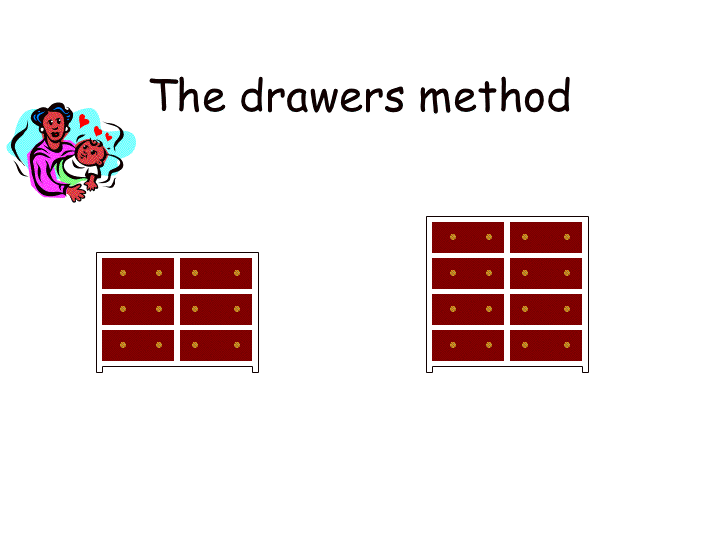 |
In the home, we put our clothes away and remember which
drawer holds what and assume that, if we're not wearing
the clothes, they will be in the drawers or in the wash.
We know which drawer to go to for our socks. |
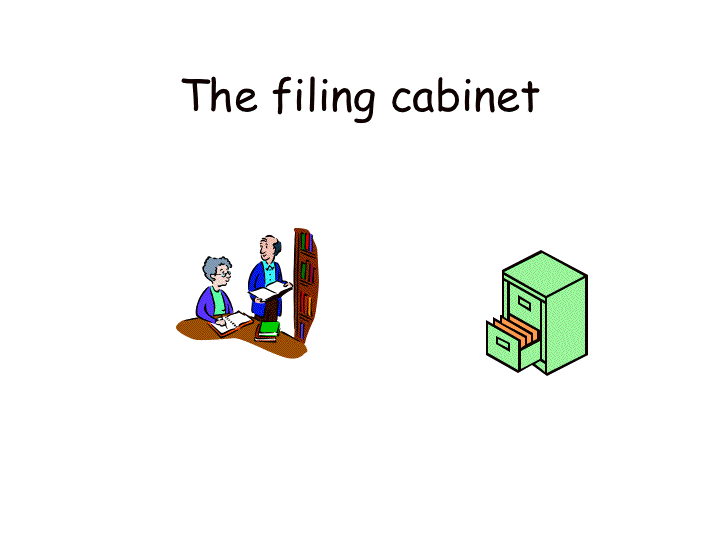 |
In the office, we put documents in files in drawers and
number them so we can look up the number, or name, and
find the file and thus the document. |
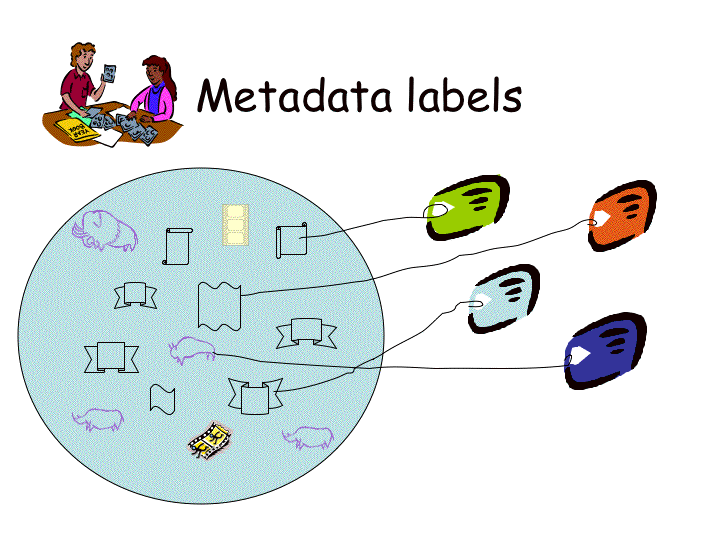 |
In the digital world, we have invisible digital objects
so we write labels for them and look through the labels
to find the object we want. |
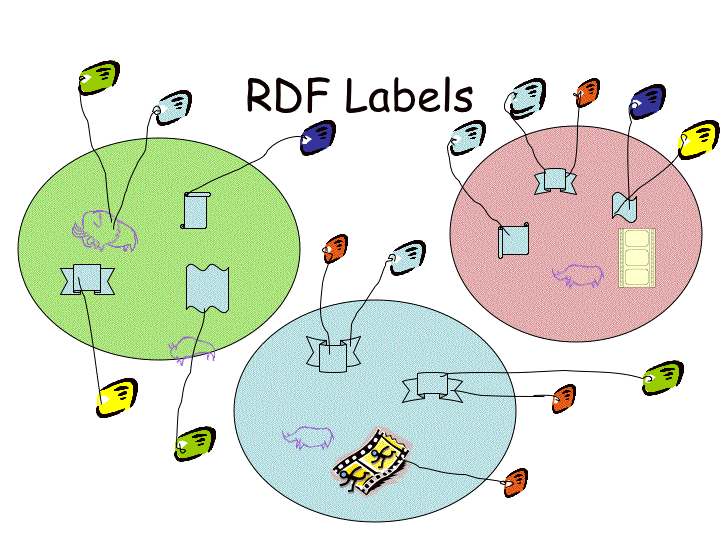 |
If we label our digital objects in the same way, even
using the same grammar, we can attach a lot of different
labels to the same object and still find what we want. |
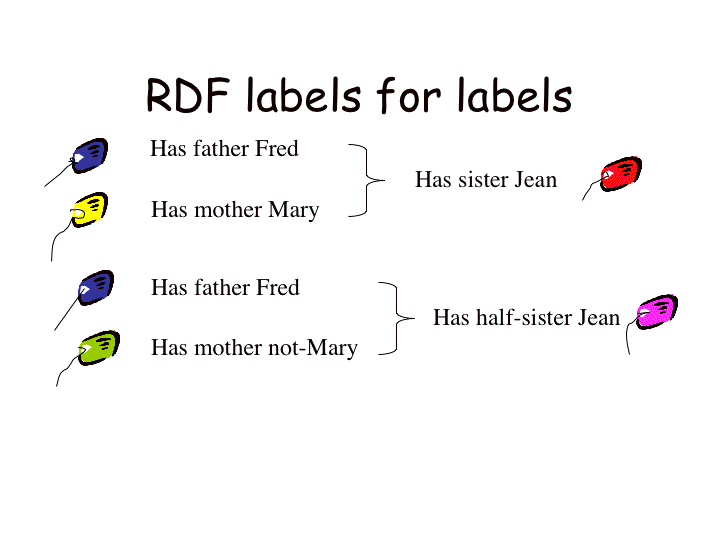 |
If we have rules for organising the labels, we can use
the labels to sort and organise the objects. |
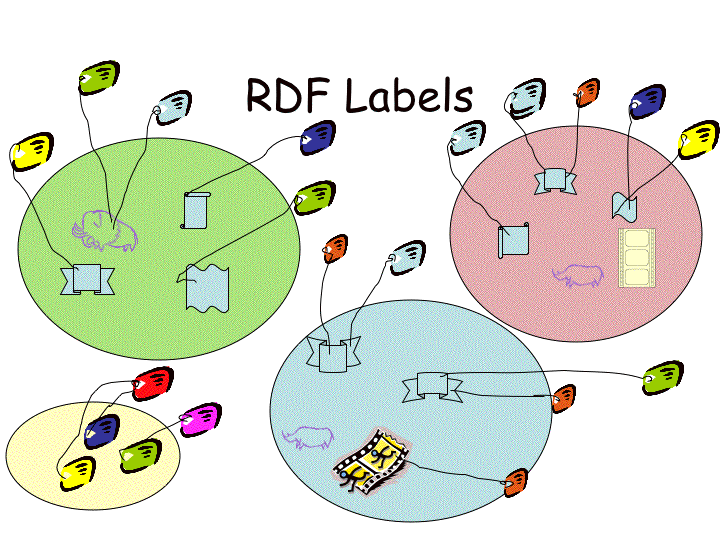 |
Then we can connect objects to each other by referring
to the labels, even without looking at the objects themselves. |
(ref - AGLS pres)... the abstraction
of labels from the objects they label.
W3C says that, "Metadata is machine understandable information
for the web." (W3C Metadata Activity)
DCMI's description in plain English includes:
Metadata has been with us since the first librarian made a
list of the items on a shelf of handwritten scrolls. The term "meta" comes
from a Greek word that denotes "alongside, with, after,
next." More recent Latin and English
usage would employ "meta" to denote something transcendental,
or beyond nature. Metadata, then, can be thought of as data about
other data. It is the Internet-age term for information that
librarians traditionally have put into catalogs, and it most
commonly refers to descriptive information about Web resources.
A metadata record consists of a set of attributes, or elements, necessary to describe
the resource in question. For example, a metadata system common in libraries -- the
library catalog -- contains a set of metadata records with elements that describe
a book or other library item: author, title, date of creation or publication, subject
coverage, and the call number specifying location of the item on the shelf.
The linkage between a metadata record and the resource it describes may take one
of two forms:
1. elements may be contained in a record separate from the item, as in the case of
the library's catalog record; or
2. the metadata may be embedded in the resource itself.
Examples of embedded metadata that is carried along with the
resource itself include the Cataloging In Publication (CIP)
data printed on the verso of a book's title page; or the TEI
header in an electronic text. Many metadata standards in use
today, including the Dublin Core standard, do not prescribe
either type of linkage, leaving the decision to each particular
implementation. (DCMI
Usage Guide)
In describing the Content Standard for Digital Geospatial
Metadata, the Clinton administration's Federal Geographic
Data Committee said;
The objectives of the standard are to provide a common
set of terminology and definitions for the documentation of
digital geospatial data. The standard establishes the names
of data elements and compound elements (groups of data elements)
to be used for these purposes, the definitions of these compound
elements and data elements, and information about the values
that are to be provided for the data elements. (FGDC
1998)
mmmm... this format or this: the date elements. (ref) or the
data elements (ref). ???
They go on to add:
The standard was developed from the perspective of defining
the information required by a prospective user to determine
the availability of a set of geospatial data, to determine
the fitness [of] the set of geospatial data for an intended
use, to determine the means of accessing the set of geospatial
data, and to successfully transfer the set of geospatial data.
As such, the standard establishes the names of data elements
and compound elements to be used for these purposes, the definitions
of these data elements and compound elements, and information
about the values that are to be provided for the data elements.
The standard does not specify the means by which this information
is organized in a computer system or in a data transfer, nor
the means by which this information is transmitted, communicated,
or presented to the user.
There are many definitions of metadata but generally they
share two characteristics; they are about "a common set
of terminology and definitions" and they have a structure
for that language that is shared. Although metadata is analogous
to catalogue and other filing descriptions, the name
usually indicates that it is recorded and used electronically.
One difficulty in the use of the term is that it is, correctly,
a plural noun but as that is awkward and not common practice,
it will herein be treated as a singular noun, following the
practice described by Murtha Baca, Head, Getty Standards Program,
in her introduction to a book about metadata written by Getty
staff and others:
Note: The authors of this publication are well aware
that the noun "metadata" (like
the noun "data") is plural, and should take plural
verb forms. We have opted to treat it as a singular noun, as
in everyday speech, in order to avoid awkward locutions. (Baca,
1998)
Another difficulty is the frequency with which the word 'mapping' is used. The
current author wishes to write about mapping but is aware of its use in the context
of 'metadata mapping' where it is usually meant to denote the relating of one mapping
scheme to another, and the 'metadata application profile' (MAP) where it means a
particular set of metadata rules, and even more specifically as used by the DCMI,
a set of rules where the rules are a combination of rules from other sets.
Yet another difficulty is a quality of good metadata: one
man's metadata can be another's data. The characteristic of
metadata being referred to here is what is known as its 'first
class' nature: any metadata can be either the data about some
other data or itself the subject of other metadata. This is
exemplified by the work of the Open Archives Initiative [OAI]
who have developed a standard for describing metadata so that
it can be 'harvested'. Typical OAI metadata is as follows:
<header>
<identifier>oai:arXiv:cs/0112017</identifier>
<datestamp>2002-02-28</datestamp>
<setSpec>cs</setSpec>
<setSpec>math</setSpec>
</header>
<metadata>
<oai_dc:dc
xmlns:oai_dc="http://www.openarchives.org/OAI/2.0/oai_dc/"
xmlns:dc="http://purl.org/dc/elements/1.1/"
xmlns:xsi="http://www.w3.org/2001/XMLSchema-instance"
xsi:schemaLocation="http://www.openarchives.org/OAI/2.0/oai_dc/
http://www.openarchives.org/OAI/2.0/oai_dc.xsd">
<dc:title>Using Structural Metadata to Localize Experience of Digital
Content</dc:title>
<dc:creator>Dushay, Naomi</dc:creator>
<dc:subject>Digital Libraries</dc:subject>
<dc:description>With the increasing technical sophistication of both
information consumers and providers, there is increasing demand for
more meaningful experiences of digital information. We present a
framework that separates digital object experience, or rendering,
from digital object storage and manipulation, so the
rendering can be tailored to particular communities of users.
</dc:description>
<dc:description>Comment: 23 pages including 2 appendices,
8 figures</dc:description>
<dc:date>2001-12-14</dc:date>
<dc:type>e-print</dc:type>
<dc:identifier>http://arXiv.org/abs/cs/0112017</dc:identifier>
</oai_dc:dc>
</metadata>
<about>
<provenance
xmlns="http://www.openarchives.org/OAI/2.0/provenance"
xmlns:xsi="http://www.w3.org/2001/XMLSchema-instance"
xsi:schemaLocation="http://www.openarchives.org/OAI/2.0/provenance
http://www.openarchives.org/OAI/2.0/provenance.xsd">
<originDescription harvestDate="2002-02-02T14:10:02Z" altered="true">
<baseURL>http://the.oa.org</baseURL>
<identifier>oai:r2:klik001</identifier>
<datestamp>2002-01-01</datestamp>
<metadataNamespace>http://www.openarchives.org/OAI/2.0/oai_dc/</metadataNamespace>
</originDescription>
</provenance>
</about>
|
(OAI,
2002)
In this example,
there is metadata about metadata.
In "Metadata Principles and Practicalities" (Weibel
et al, 2002),
the authors comment that:
The global scope of the Web URI namespace means that each data element in an element
set can be represented by a globally addressable name (its URI). Invariant global
identifiers make machine processing of metadata across languages and applications
far easier, but may impose unnatural constraints in a given context.
Identifiers such as URIs are not convenient as labels to be
read by people, especially when such labels are in a language
or character set other than the natural language of a given
application. People prefer to read simple strings that have
meaning in their own language. Particular tools and applications
can use different presentation labels within their systems
to make the labels more understandable and useful in a given
linguistic, cultural, or domain context."(Weibel
et al, 2002)
In fact, although it is often hoped that metadata will be
human-readable, the more it becomes useful to computers, the
more that it seems to become unreadable to humans. In large
part this is due to its generally being encoded in languages
that make it essential for the reader to know what is encoding
and what is the metadata, but it is also perhaps an artifact
of how it is presented.
Atlases
are useful collections of maps, traditionally collected from
a range of cartographers (Ashdowne
et al, 2000).
Such a collection makes more sense, or is more useful if the
conventions for representation used in each map are the same.
In this writing, metadata is used to denote structured descriptions
of resources that are organised in a common way and use a common
language. The way of writing the descriptions and terms used
should be defined in an open way so they can be interpreted
by machines and people.
When collecting descriptive metadata for discovery, one usually
has a database or repository and specifications for the structure
of the data to be stored in that repository that makes it possible
to ‘publish' the data in a consistent way. In order to share
metadata for repositories, it is necessary to have the same
structure for all metadata but usually, to make one's own metadata
most useful locally, those who develop such metadata tend to
want idiosyncratic structures that suit their local purposes.
So local specificity and global share-ability, inter-operability,
are competing interests. Sharing of the metadata means that
more people can reuse it whereas local specificity makes it
more valuable in the immediate context, where it is usually
engaged with more frequently, and where the cost is often borne.
One of the features of good metadata is that it is suitable for use in a simple
way but that it can handle complexity. Another is that it operates
widely on the dimension of locally-specific to globally-interoperable.
simple
^
|
locally-specific <---------------------->
globally interoperable
|
v
complex
The Dublin
Core Metadata Element Set (more recently known as the DC
Terms and now called the Description
Set???) provides
an excellent example of how this might be achieved. It is a
formal definition of the way in which descriptive information
about a resource can be stored. It has a core set of elements
that have been found to be extremely useful in describing almost
every type of resource on the Web. Elements can be qualified
in various ways for greater precision. In addition, selected
elements can be combined with others in what is
called an 'application profile' to create a new set for a given
purpose. 'Dublin
Core' metadata is considered to be such if it conforms to the
formal definition of such metadata although there is no requirement
for the number of elements that must be used beyond that there
must be a unique identifier for the resource being described.
DC metadata can be expressed in a range of computer languages.
Formal Definition of DC Metadata
Originally, DC metadata was used in HTML tags in simple resources.
The choice of meaning for elements was, to a certain extent,
arbitrary and based on a pragmatic approach to the high-cost
of quality metadata and the experience of cataloguers in the
bibliographic world - mostly. Some of the definitions were
arrived at as a sort of compromise and they were fairly loosely
defined, even where experienced cataloguers knew there were
problems being hidden within them.
Over the last decade, the definitions and supporting documentation
have been slowly improved, always with the need to ensure that
this will not alienate existing systems.
Currently, the DC terms are defined as follows:
Each term is specified with the following minimal
set of attributes:
- Name:
- The unique token assigned to the term.
- URI:
- The Uniform Resource Identifier used to uniquely identify
a term.
- Label:
- The human-readable label assigned to the term.
- Definition:
- A statement that represents the concept and essential
nature of the term.
- Type of Term:
- The type of term, such as Element or Encoding Scheme,
as described in the DCMI Grammatical Principles.
- Status:
- Status assigned to term by the DCMI Usage Board, as
described in the DCMI Usage Board Process.
- Date issued:
- Date on which a term was first declared.
Where applicable, the following attributes provide additional
information about a term:
- Comment:
- Additional information about the term or its application.
- See:
- A link to authoritative documentation.
- References:
- A citation or URL of a resource referenced in the Definition
or Comment.
- Refines:
- A reference to a term refined by an Element Refinement.
- Qualifies:
- A reference to a term qualified by an Encoding Scheme.
- Broader Than:
- A reference from a more general to a more specific Vocabulary
Term.
- Narrower Than:
- A reference from a more specific to a more general Vocabulary
Term. (DC
Terms)
A Formal statement of the Grammar of DC Metadata
Despite the aim of having strict adherence to the original
definitions of the DC terms, it became difficult to deal with
the many moves to expand, qualify and otherwise change the
DC terms. Doggedly sticking to the original documentation without
further explanation and improved interoperability was proving
a threat to the utility of DC metadata as the technology developed.
In 2000, Thomas Baker described the grammar of the DCMES in
an attempt to make it clear how it manages extensibility of
elements:
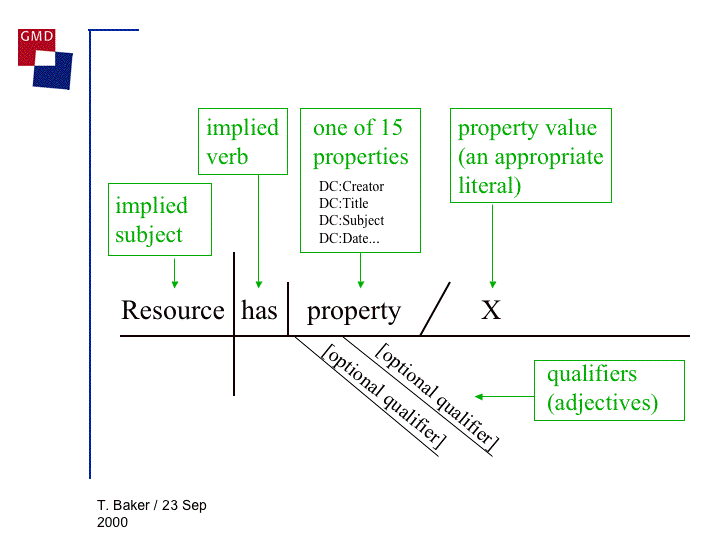
(Baker,
2000)
with examples:
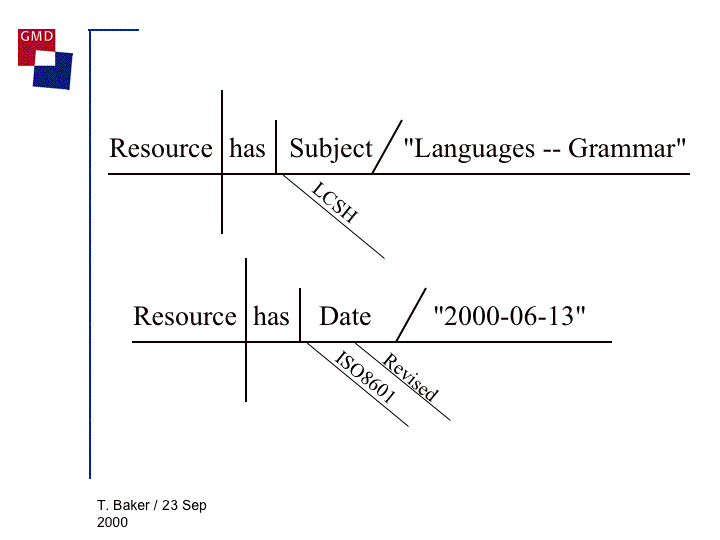
Application Profiles
In 1999, a meeting about how to use DC metadata in educational
portals was convened at Kattamingga in Australia by the author.
At this meeting, educationalists discussed the suitability
of the DC terms to provide for descriptions of learning resources.
The international group agreed that there were some extra things
that collectively they wanted to use and that if there were
a way of 'regularising' these, interoperability between educational
catalogues (repositories) would be improved.
Ad hoc rules for extensions and alterations of terms were
suggested on the spot by the Director of the
DCMI, Stu Weibel, who said that all qualifications should:
- not
redefine terms,
- not duplicate terms, and
- follow the dumb-down rule. (author's
notes)
In addition, there was the idea that certain communities would
find particular terms useful and the DCMI should provide for
their inclusion, perhaps as a second layer of terms for use.
Significantly, this was the first formal
application profile. An application profile was understood
to be a metadata profile, conformant to DC principles, but
suited to the needs of the local or domain specific community
using it. The development led to the formation of working groups
for communities of interest within the DCMI structure, and
soon was followed by others such as the Government Working
Group.The Government working group of the DCMI followed the
lead of the education Working Group by developing an application
profile. Many years later, the term 'audience' was added to
the core DC set of terms.
In 2000 a seminal article
describing application profiles was written by Rachel Heery
and others ( Heery
et al,
2000), and these are now established within DC practice.
The essence of an application profile is that it allows for
the mixing of metadata terms from different schema: the constraint
on it is that it should not, itself, define new metadata terms
but derive them from existing schema. When this is not possible
because the community in fact wants a new term, this is achieved
by the community defining that term in a new name space and
then referring to it, alongside other terms used in the application
profile.
The DCMI glossary of 2006 offered the following:
application profile
In DCMI usage, an application profile is a declaration of
the metadata terms an organization, information resource,
application, or user community uses in its metadata. In
a broader sense, it includes the set of metadata elements,
policies, and guidelines defined for a particular application
or implementation. The elements may be from one or more
element sets, thus allowing a given application to meet
its functional requirements by using metadata elements
from several element sets including locally defined sets.
For example, a given application might choose a specific
subset of the Dublin Core elements that meets its needs,
or may include elements from the Dublin Core, another element
set, and several locally defined elements, all combined
in a single schema. An application profile is not considered
complete without documentation that defines the policies
and best practices appropriate to the application. (DCMI
Glossary-A)
Dublin Core Abstract Model
In an attempt to further clarify the Dublin Core approach
to metadata, the DCMI Architecture Working Group published
two diagrams and some description of them in March 2005. Version
1.0 of what is known as the Abstract Model [DCMI
AM]
emerged after six months of interaction and consideration by
the Working Group in an open forum.
It should be noted that its authors,
Powell et al., stated that: “the UML modeling used here shows
the abstract model but is not intended to form a suitable
basis for the development of DCMI software applications”.
Software developers were, however, explicitly stated to be
one of the three target audiences for the DCAM, the other
two being developers of syntax encoding guidelines and of
application profiles.
That Abstract Model was a substantial step
towards making it easier for implementers to model the DC metadata
but it still did not solve all the problems. In 2006, a funded
effort to provide an abstract model was commissioned by
the DCMI. This produced a more formal graphical representation.
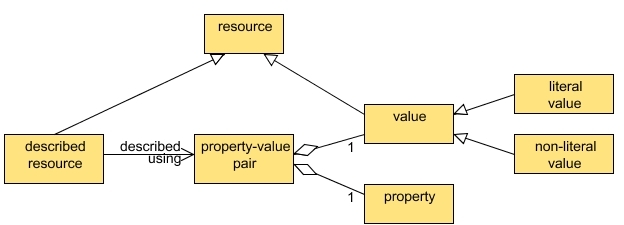
DCMI Resource Model (Powell
et al, 2007)
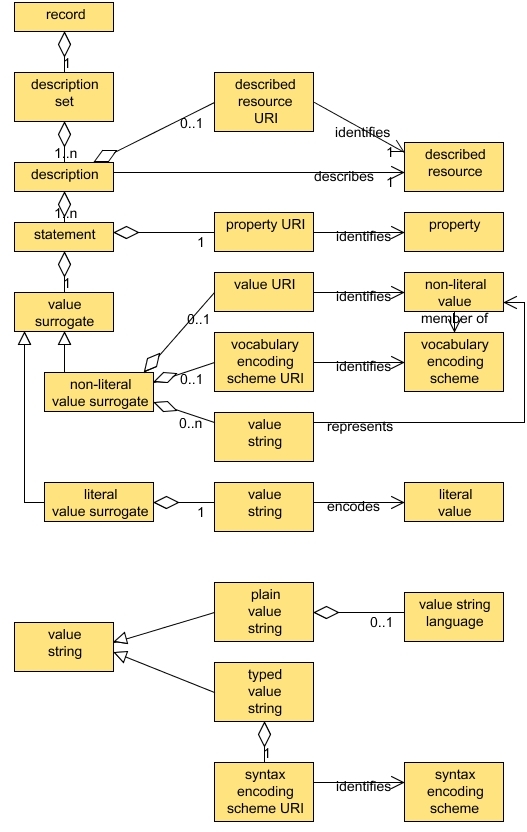
DCMI Description Set Model (Powell
et al, 2007)
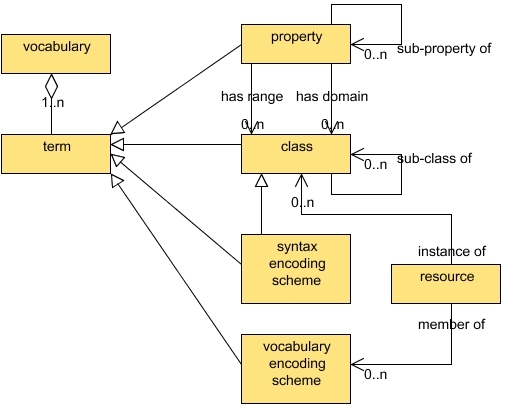
DCMI Vocabulary Model (Powell
et al, 2007)
That model did not adhere to the strict rules for such diagrams
set by the Unified Modeling Language (ref) and was not as easy
to interpret as had been hoped. The author and a student (Pulis
& Nevile, 2006), and indeed another set of authors
(ref), presented papers
at the DC 2006 Conference in which they argued for a yet better
model that was represented in strict UML form, pointing to
a number of inconsistencies in the then current model. A new
one was commissioned in 2007 and at the DC 2007 Conference,
Mikael Nilsson (2007)
presented a formal version and what is to be known as the Singapore
Framework.
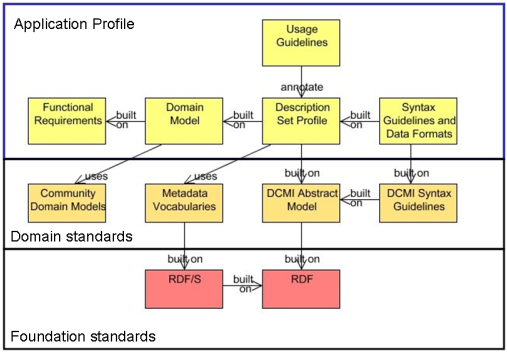 (Nilsson,
2007)
(Nilsson,
2007)
Having more precisely defined models enables profile developers
to be more certain about what they need to do. This is important
and the lack of a clear model, to a large extent, explains
many of the difficulties faced in the accessibility metadata
work.
DC as a mapping language for resources
DCMES can thus be seen as providing a three-dimensional mapping of the characteristics
of Web resources:
- element
- qualifiers
- vocabularies
with the facility for application profiles that contain combinations
of these.
As some might see it, DC is providing for infinitely extensible,
n-dimensional mapping of resources.
In general, the maps of metadata are not read so much as used in the discovery or
identification process. But mapping in this sense is analogous to mapping as we commonly
think of it in the cartographic sense. There are rules for the co-ordinates (descriptions)
of resources and there are structural rules known in the information world as taxonomies
that are topologies. The browse structure of a Web site allows one to zoom in and
out on details and map intersections and location finders are common.
Metadata for Web 2.0
Web 2.0 is not a new Web but it is a world in which resources
are distributed and combined in many ways at the instigation
of both the publisher and the user. It is not possible to limit
the ways in which this will be done and it is not yet clear
how to 'freeze' or later reconstruct any given instantiation
of a resource.
There is another aspect of Web 2.0 that is relevant to the
work in accessibility. Social interaction on the Web is being
generated in many cases by what is known as 'tagging' of resources.
These resources are often very small, atomic, objects such
as an image, or a small piece of text, or a sound file. While
these objects have been on the Web since the beginning, in
general they have been published within composite resources
that have not been separately identified and they have rarely
been described in metadata. The move is towards what is known
as microformats:
a set of simple open data format standards that many (including
Technorati) are actively developing and implementing for
more/better structured blogging and web microcontent publishing
in general. (Microformats)
Associated with this move is the departure of many Web users
from Web site visitations to the use of 'back doors' into information
stores. So many people use Google and its equivalent to find
what they want and then 'click' their way into the middle of
Web sites, that the time has come to think seriously about
the role of Web sites. Blogs and wikis as publishing models
are increasingly becoming the source of information for many
people. As will be seen (in
ch ???), the increasing availability of atomic objects,
or objects in what is becoming known as micro-formats, is
expected to increase the accessibility of the Web.
Taxonomies
With respect to taxonomies, Lars Marius Garshol has the following
to say:
The term taxonomy has been widely used and abused
to the point that when something is referred to as a taxonomy
it can be just about anything, though usually it will mean
some sort of abstract structure. Taxonomies have their beginning
with Carl von Linné [3], who developed a hierarchical classification
system for life forms in the 18th century which is the basis
for the modern zoological and botanical classification and
naming system for species. In this paper we will use taxonomy
to mean a subject-based classification that arranges the
terms in the controlled vocabulary into a hierarchy without
doing anything further, though in real life you will find
the term "taxonomy" applied to more complex structures
as well. ...
Note that the taxonomy helps users by describing the subjects;
from the point of view of metadata there is really no difference
between a simple controlled vocabulary and a taxonomy. The
metadata only relates objects to subjects, whereas here we
have arranged the subjects in a hierarchy. So a taxonomy
describes the subjects being used for classification, but
is not itself metadata; it can be used in metadata, however
(Garshol,
2004).
He then points out that at one level higher, there are thesauri
that usually provide preferred terms, wider and narrower terms.
Of these he says:
Thesauri basically take taxonomies as described
above and extend them to make them better able to describe
the world by not only allowing subjects to be arranged
in a hierarchy, but also allowing other statements to be
made about the subjects
(Garshol,
2004).
The ISO
2788 standard
for thesauri provides for more details and helps make thesauri
more useful for information discovery. The extra qualifiers
are similar to those used in metadata definition, such as
scope note, use top term and related term.
Graphical (and interactive) representation of metadata
'Tagging' has become a feature of what many people think of
as Web 2.0, the social information space where users contribute
to content. This is often done simply by that adding of some
'tags' or freely chosen labels to others' content. For example,
a user may visit a site and then send a tag referring to that
site to a tag repository, organised by such as del.icio.us
or digg. Typically such tags have values
chosen freely by the user and so they may vary enormously for
one concept, as well as the concepts associated with tags varying
incredibly. In 2006, the STEVE
Museum's Jennifer Trant (2006) reported
that museum visitors who viewed paintings on site were prone
to submit one tag but a completely different one when they
re-visited the same painting remotely via a digital image.
As indicated below, tags are generally displayed in what might
be called a graphical form, for example, in tag clouds. With
the increasingly graphical representation of metadata, including
tags, metadata maps are starting to emerge. These can be used
in a variety of ways, as considered below. Associated with
the tags are not thesauri, as in the case of more structured
metadata but what are called folksonomies. These are, in fact,
ontologies but with very different characteristics from the
more traditional library subject terms and generally not structured;
that is, users typically add tags with subject, author, format,
etc., all mixed in together. This is not necessary, and some
users are precise in their use of tags, including encoding
them to relate to standard DC Terms (see
Pete Johnston's work...).
It should be noted that in response to the increased use
of tags on sites, the author started a community within the
Dublin Core Metadata Initiative that is concerned with the
relationship between standard metadata and tagging (DC
Social Tagging).
It is not yet known if tagging is merely a fashion or here
to stay as a robust way of getting user-generated metadata
but it is of interest to see how users use words, and so might
help in the selection of terms for standard thesauri (ed,
STEVE, etc).
Tags as metadata for resources
Rel-Tag is one of several MicroFormats. By adding rel="tag" to
a hyperlink, a page indicates that the destination of that
hyperlink is an author-designated "tag" (or keyword/subject)
of the current page. (Microformats-2)
Tags are described on the Microformats Web site as follows:
rel="tag" hyperlinks are intended to be visible
links on pages and posts. This is in stark contrast to meta
keywords (which were invisible and typically never revealed
to readers), and thus is at least somewhat more resilient
to the problems which plagued meta keywords.
Making tag hyperlinks visible has the additional benefit
of making it more obvious to readers if a page is abusing
tag links, and thus providing more peer pressure for better
behavior. It also makes it more obvious to authors, who may
not always be aware what invisible metadata is being generated
on their behalf. (Microformats-2)
In other words, the format
<a href="http://example.com/tag/example" rel="tag">example</a>
is
recommended in preference to
<link rel="tag" href="..." />
Tags are typically gathered and presented in a variety of
ways including in tag piles as shown in an extract from an
author cloud:
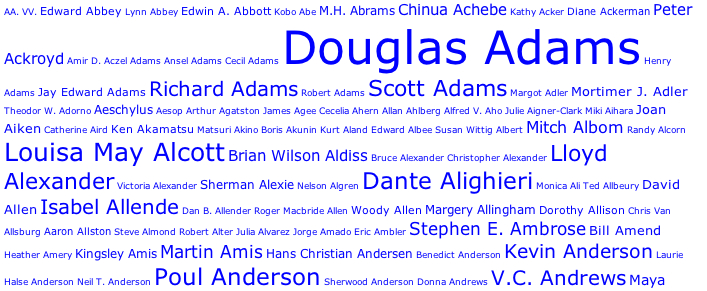
A tag cloud (Library
Thing)
Tag clouds have no specific structure. They tend to be simply
piles of words, in no particular order except perhaps either
alphabetical or temporal, with more popular terms displayed
in larger font than less popular ones. Other systems use the
graphical representation to show relationships between terms
used, displaying the underlying structure in hierarchical,
or other maps. Sometimes this is done explicitly, as in the
case of the subject terms used in the Dewey Decimal System
(DDS), for example,
or implicitly, as done with the DC terms, in an abstract model
that is completed for any set of actual terms. (See Fig
??? above).
Organization schemes like ontologies are conceptual;
they reflect the ways we think. To convert these conceptual
schemes into a format that a software application can process
we need more concrete representations... (Lombardi,
2003)
Topic maps
Lars Marius Garshol describes several types of organising
schemes:
Data Model - A description of data that consists of all
entities represented in a data structure or database and
the relationships that exist among them. It is more concrete
than an ontology but more abstract than a database dictionary
(the physical representation).
Resource Description Framework (RDF) - a W3C standard XML
framework for describing and interchanging metadata. The
simple format of resources, properties, and statements allows
RDF to describe robust metadata, such as ontological structures.
As opposed to Topic Maps, RDF is more decentralized because
the XML is usually stored along with the resources.
Reference:
Topic Maps - An ISO standard for describing knowledge structures
and associating them with information resources. The topics,
associations, and occurrences that comprise topic maps allow
them to describe complex structures such as ontologies. They
are usually implemented using XML (XML Topic Maps, or XTM).
As opposed to RDF, Topic Maps are more centralized because
all information is contained in the map rather than associated
with the resources (Garshol,
2002)
He writes:
When XML is introduced into an organization it is usually
used for one of two purposes: either to structure the organization's
documents or to make that organization's applications talk
to other applications. These are both useful ways of using
XML, but they will not help anyone find the information they
are looking for. What changes with the introduction of XML
is that the document processes become more controllable and
can be automated to a greater degree than before, while applications
can now communicate internally and externally. But the big
picture, something that collects the key concepts in the
organization's information and ties it all together, is nowhere
to be found.
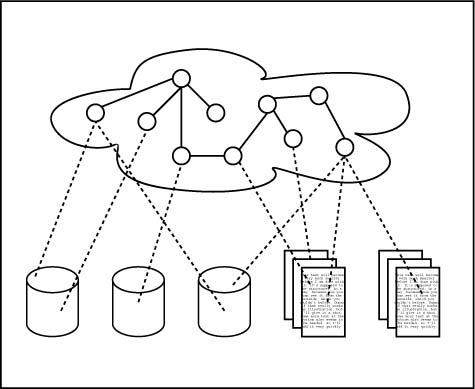
This is where topic maps come in. With topic maps you create
an index of information which resides outside that information,
as shown in the diagram above. The topic map (the cloud at
the top) describes the information in the documents (the
little rectangles) and the databases (the little "cans")
by linking into them using URIs (the lines).
The topic map takes the key concepts described in the databases
and documents and relates them together independently of
what is said about them in the information being indexed.
So when a document says "The maintenance procedure
for part X consists of the following steps..." the
topic map may say "Part X is of type Q and is contained
in parts Y and Z and its maintenance procedure resides
in document W". This means taking a step back from
the details and focusing on the forest rather than the
trees. Or, to put it another way, it means managing the
meaning of the information, rather than just the information.
The result is an information structure that breaks out of
the traditional hierarchical straightjacket that we have
gotten used to squeezing our information into. A topic map
usually contains several overlapping hierarchies which are
rich with semantic cross-links like "Part X is critical
to procedure V." This makes information much easier
to find because you no longer act as the designers expected
you to; there are multiple redundant navigation paths that
will lead you to the same answer. You can even use searches
to jump to a good starting point for navigation (Garshol,
2002).
Faceted classification, according
to Garshol, was first developed by S.R. Ranganathan in the
1930s.
and works by identifying a number of facets into which
the terms are divided. The facets can be thought of as different
axes along which documents can be classified, and each facet
contains a number of terms. How the terms within each facet
are described varies, though in general a thesaurus-like
structure is used, and usually a term is only allowed to
belong to a single facet ...
In faceted classification the idea is to classify
documents by picking one term from each facet to describe
the document along all the different axes. This would then
describe the document from many different perspectives (Garshol,
2004).
In Rangathan's case, he picked 5 axes. There has been significant
work on faceted classification since this was first invented
and recently it has been demonstrated as a powerful and useful
way to use metadata (Childress and al, http://www.oclc.org/research/publications/2000-2009.htm)
Garshol list of classification systems includes
categories, taxonomies, thesauri, facets and then ontologies.
He argues that as we progress through the list we are
getting more expressive power with which to describe objects
for their discovery. Of ontologies, he says:
With ontologies the creator of the subject description
language is allowed to define the language at will. Ontologies
in computer science came out of artificial intelligence,
and have generally been closely associated with logical
inferencing and similar techniques, but have recently begun
to be applied to information retrieval.
He goes on in this article to describe topic maps as an
ontology framework for information retrieval and to show
that topic maps have a very rich structure for information
about an object that is also quite likely to be interoperable.
As his example he gives:
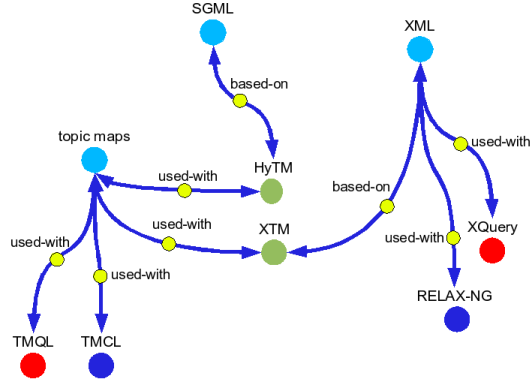
The colours have significance as shown:
colour legend
| Identifier |
Meaning |
| round discs |
names of topics |
| arrows |
associations |
| aqua |
occurrences of a topic |
| blue |
vocabulary languages |
| red |
query languages |
| green |
markup languages |
| yellow |
these show the association types |
| Note: |
different colours of discs could be read as scope of
topic names, or type of topic |
Ontopia's Omnigator is a tool that allows the
user to click on any topic name and have it become the 'centre
of the universe' with its connections surrounding it. This
makes interactive navigation around the graphical maps very
simple and intuitive, and seamless across topic maps encoded
differently [Ontopia].
Resource Description Framework
In a similar way, the Resource Description Framework
(RDF) provides a very
flexible way of mapping resources. RDF requires the description
of properties of resources to be strictly in the form:
resource ----- relationship
----- property
or
subject ---- predicate ---- object
as in
http://dublincore.org ---- has title ---- Dublin
Core Metadata Initiative
The theory is that if all the properties are so described,
it will be easy to make logical connections between them. Currently,
RDF is implemented in XML, as that is the language of most
common use today, but the framework is independent of the encoding.
RDF maps, like other good metadata systems, are interoperable
and extensible. A simple example of RDF maps and how they
interoperate is provided by the following:
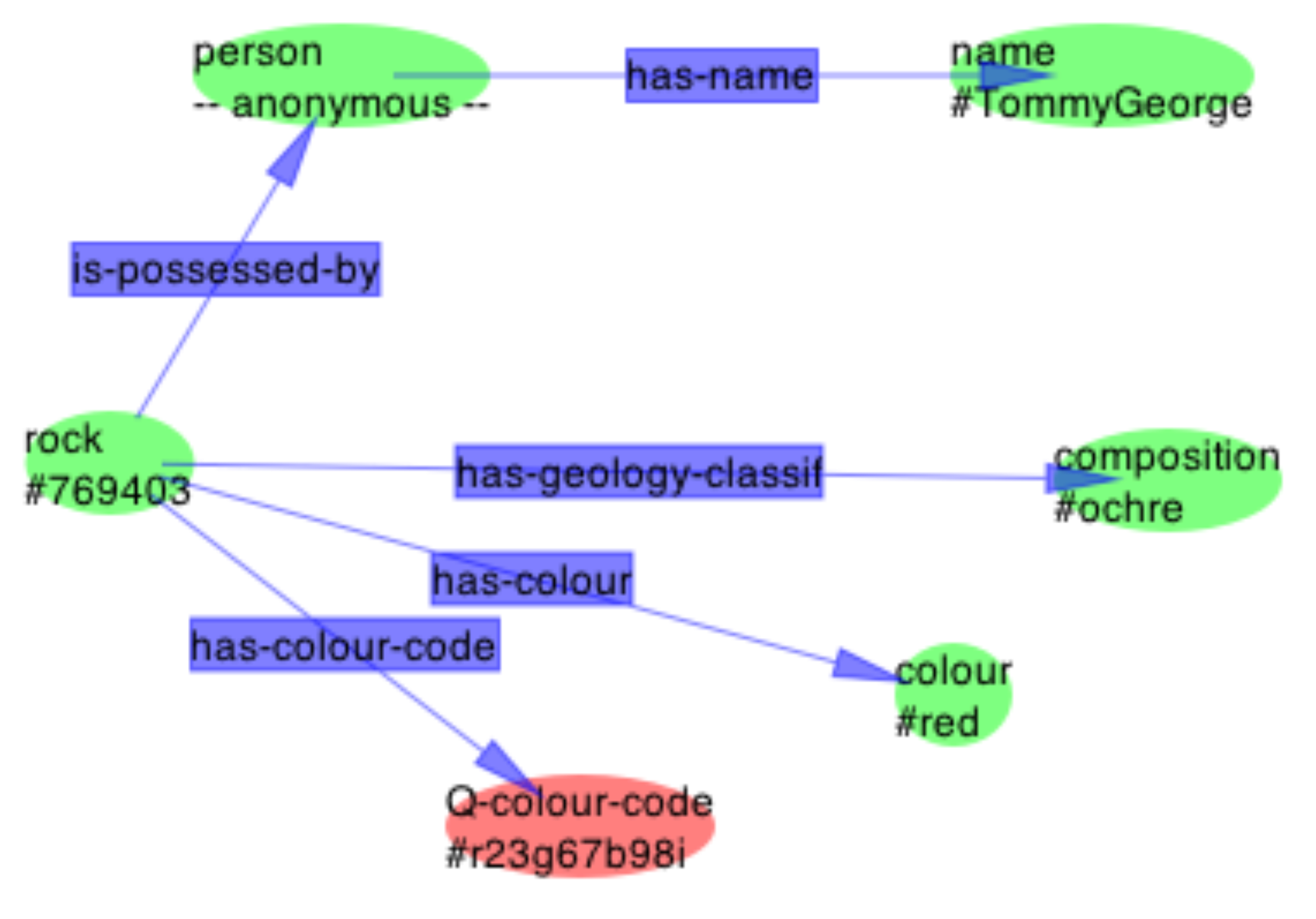 and
and 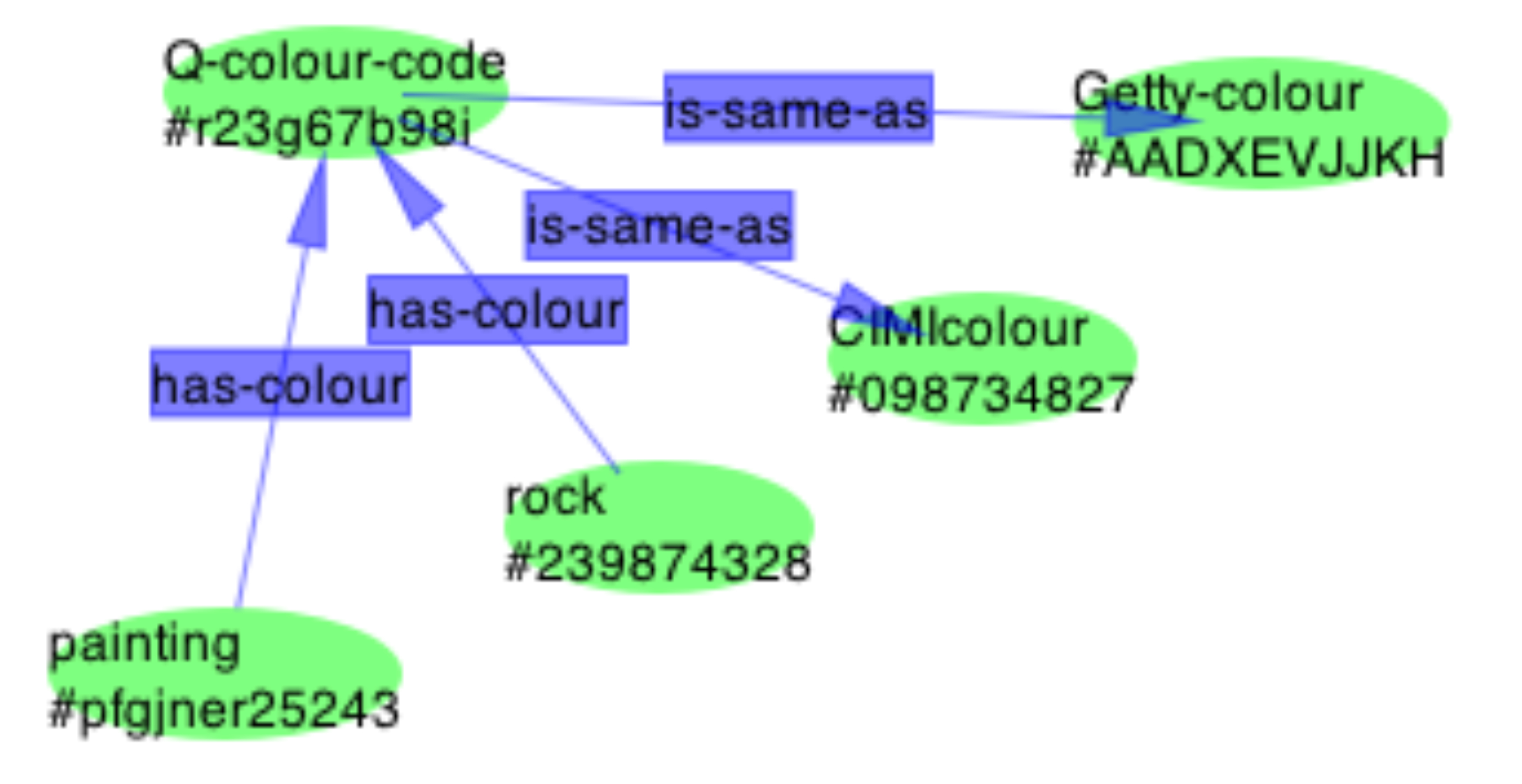
which are combined simply by overlaying the
matching entities Q-colour-code #r23g67b98i to form the greater
map:
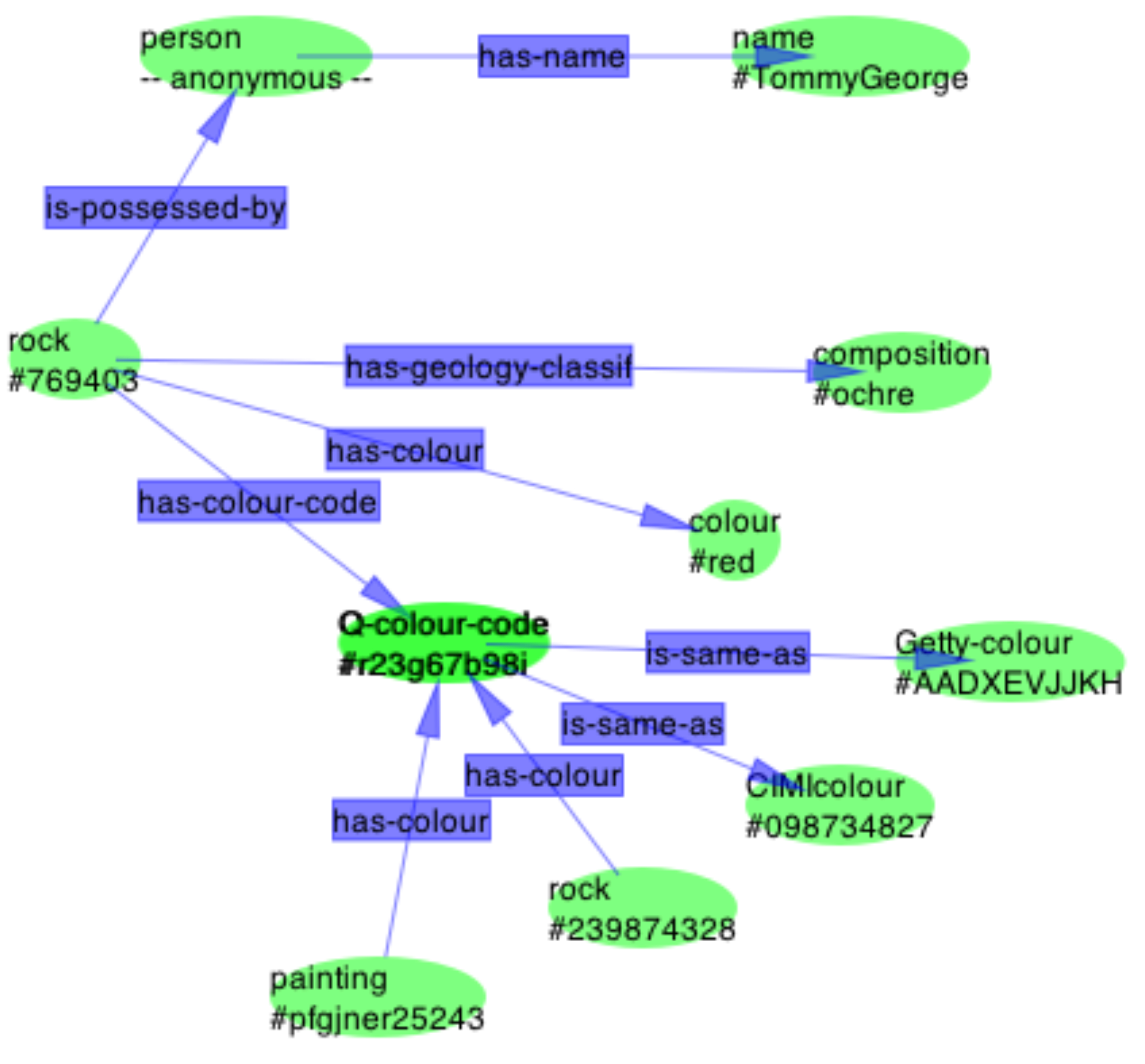
Dr Tommy George: "A lot of paintings are made in red." (Nevile & Lissonnet,
2003)
One of the features of graphical maps that is of interest
to those with vision disabilities, and many programmers, is
that graphical programming is, when undertaken with the right
tools, simultaneously graphical and textual. This is the same
as for traditional geospatial maps, where databases often hold
the data and where they can be interrogated by users who do
not choose to work graphically (sometimes just because of the
complexity and enormity of the graphical representation).
This is also typical of the way CAD designers work.
Interactive metadata
maps
Queensland University of Technology (QUT) has a system in
which they not only use metadata, but provide what they call
a map of it. The following is a QUT metadata map of a three
page site.

[QUT]
and they have metadata records that are referred to by interaction
with the map, namely by clicking on a link. While it stretches
the imagination to call the QUT metadata tool a 'map', or interactive,
there is an interactive map that is more common and familiar
but less often thought of as that: the browse and inverse browse
mapping that appears on many sites as what are often referred
to as 'breadcrumbs', for example:
You are here: Home → Standards → Projects →
FGDC Standards Projects → Content Standard for Digital Geospatial
Metadata (FGDC).
Cross-walks and mappings
The interoperability of metadata is considered one of its
strengths and it has, in its short recent history,
led to many institutional digital libraries sharing their
metadata to develop what operate as united libraries, following
a range of organisational and technical models. Where sets
of metadata are to be combined for some purpose, such as integration,
if the metadata sets are not based on the same standards, they
are often at least able to be mapped from one to the other.
The mapping can be loss-less when the two systems are fully
compatible but often this is not the case and some compromises
are made. Dublin Core metadata, for example, follows the flat
model of one property for each metadata statement and all properties
can be repeated and none but the identifier of the resource
are mandatory. IEEE Learning Object Metadata (LOM), on the
other hand, is deeply hierarchical that is, a property can
also have sub-properties and the sub-properties can have their
own sub-properties. Mapping from LOM to DC metadata is not
possible without loss at this stage, in general, although it
is possible to do some mapping from LOM to DC when RDF encoding
principles are applied (not the general case).
This is discussed
in greater detail later (Ch
???)
see omnigator!!! it's wonderful - at http://www.ontopia.net/omnigator/models/index.jsp
Thesauri and Ontologies
SKOS
do we want stuff on this?
Cartographic Maps Compared to Metadata Maps
| Qualities and Characteristics of Cartographic Maps |
Qualities and Characteristics of Electronic Catalogues (Metadata) |
| formal definition of .. |
|
| international cartographic standards |
international metadata standards |
| search |
search |
| browse |
browse |
| topology |
taxonomy |
| crossing of boundaries |
application profiles |
| increased scale |
qualifiers |
| decreased scale |
|
| visual form - printed map |
visual form - screen browse |
| |
|
| |
|
Next ->












 (
(


 and
and 

